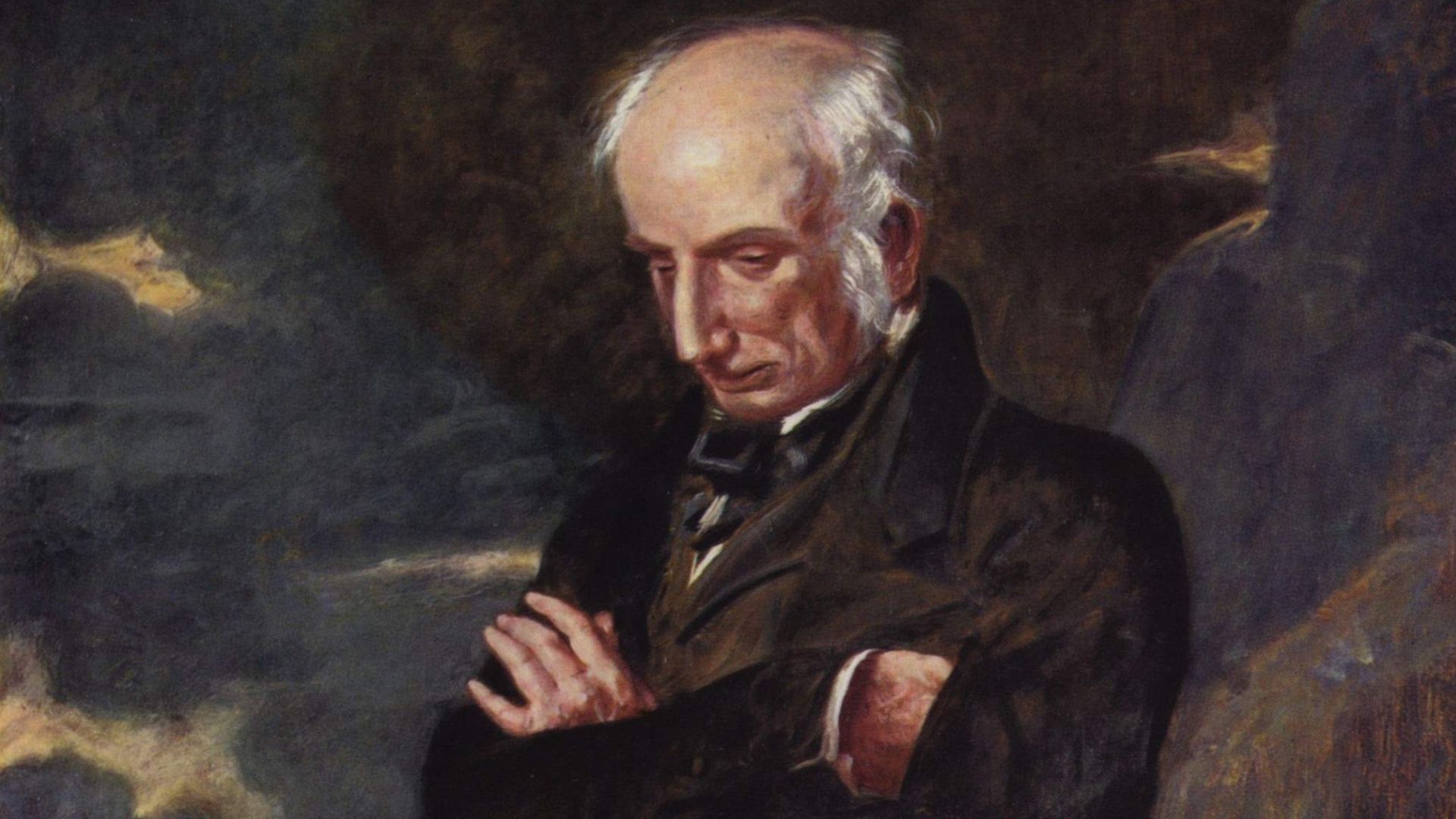A Whirl-Blast From Behind The Hill Poem by William Wordsworth
A Whirl-Blast From Behind The Hill
A Whirl-Blast from behind the hill
Rushed o'er the wood with startling sound;
Then--all at once the air was still,
And showers of hailstones pattered round.
Where leafless oaks towered high above,
I sat within an undergrove
Of tallest hollies, tall and green;
A fairer bower was never seen.
From year to year the spacious floor
With withered leaves is covered o'er,
And all the year the bower is green.
But see! where'er the hailstones drop
The withered leaves all skip and hop;
There's not a breeze--no breath of air--
Yet here, and there, and everywhere
Along the floor, beneath the shade
By those embowering hollies made,
The leaves in myriads jump and spring,
As if with pipes and music rare
Some Robin Good-fellow were there,
And all those leaves, in festive glee,
Were dancing to the minstrelsy.
Lover of Nature, Wordsworth shows his minute observation of Nature even if it is a minor matter! It is a recording of his experience in Nature!
Not really a Wodsworth fan but I can see why so many people love his poetry. Hey Kevin, this is a poem, it's to be enjoyed not dissected like a mathematical problem.
Thnak you for giving us these minor poems. It makes one realise that the anthologies are not everything!
Wordsworth has no equals in poetic world. He is natures own poet. Watch the words and worthy sound and lyrical beauty in these opening lines. A Whirl-Blast from behind the hill Rushed o'er the wood with startling sound; Then- all at once the air was still, And showers of hailstones pattered round. - - - - - - - - - - - - - - - - - KAVIN CHARALAN
Wordsworth accurately describes the sudden onslaught of an autumn or winter squall in this poem, celebrating the joy and wonder of being caught outdoors and finding the refuge of natural shelter, from which to observe stimulating changes in the seasonal weather. The poem is both realistic description and romantic images. The immediacy of the first two lines, ‘A Whirl-Blast from behind the hill/ Rushed o'er the wood with startling sound; ’ describes the sound and force of a wind gust originating from ‘behind the hill’, funneled into ‘the wood’. This squall, the sudden sharp increase in wind speed, which proceeds rain showers, thunderstorms, heavy snow, or in this case hailstone showers; we feel and experience with Wordsworth. The strange phenomena of still air, just before hailstones strike through ‘leafless oaks towered high above’, we can also observe as hailstones ‘pattered round’, rebounding with force from the ground; seeming to dance gleefully. Our image of the scene is extended, we now view Wordsworth as he ‘sat within an undergrove’ of hollies. These hollies provide excellent shower because they are evergreen and deciduous trees, shrubs, climbers. We feel Wordsworth’s admiration and appreciation for this foliage ‘Of tallest hollies, tall and green; ’ which shelters him. Why does Wordsworth describe it as ‘A fairer bower was never seen.’ Because ‘all the year the bower is green.’ But what point is Wordsworth making? ‘From year to year the spacious floor/ With withered leaves is covered o'er, ’ and this contrast of ‘withered leaves’ from the wood of tall now ‘leafless oaks’; highlights the miracle of the deciduous hollies, amazingly still ‘tall and green; ’ despite the harsh chill weather. With childlike joy Wordsworth exclaims ‘But see! where'er the hailstones drop/ The withered leaves all skip and hop; ’ and we share marvel at the sight of dancing leaves, dancing with hailstones ‘pattered round’. Wordsworth continues his keen observation of nature and the effect of the squall. More contrasts, leaves skip and hop but ‘There's not a breeze-no breath of air—’, and our eyes race everywhere; watching the scene of ‘leaves in myriads jump and spring’, ‘here, and there, and everywhere/ Along the floor, beneath the shade/ By those embowering hollies made’. How can Wordsworth best describe this magic effect of leaves in myriads dancing? With the romantic yet fitting explanation that the leaves dance ‘As if with pipes and music rare/ Some Robin Good-fellow were there, ’ and Wordsworth proceeds to describe the accumulate effect. It is as if ‘all those leaves, in festive glee, / Were dancing to the minstrelsy.’ Wordsworth has combined a mastery of realism with an appealing flight of mystic fancy, to write an endearing poem, which deserves to be read several times in detail.
This poem has not been translated into any other language yet.
I would like to translate this poem
What was William doing sitting in an undergrove of hollies in the middle of Winter? Some comments: “Where leafless oaks towered high above…” “high” is included in “towered” (“high” added for scansion) “A fairer bower was never seen.“ Was this the fairest bower ever? Had W seen every bower ever? This adds nothing to the description of the bower. “Of tallest hollies, tall and green…” Why repeat that they were tall? (“tall” added for scansion) “The leaves in myriads jump and spring, …” What is the difference between jumping and springing? - “spring” (or “jump”) added for scansion) . “As if with pipes and music rare…” Why should the music of Robin Goodfellow be “rare”? What does “rare” mean in this context – rarely heard or of surpassing excellence? In either case how can W ascribe such qualities to music he has never heard?